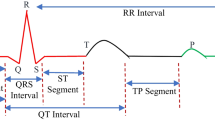Abstract
This paper presents a prioritized resource allocation algorithm to share the limited communication channel resource among multiple wireless body area networks . The proposed algorithm is designed based on an active superframe interleaving scheme, one of the coexistence mechanisms in the IEEE 802.15.6 standard. It is the first study to consider the resource allocation method among wireless body area networks within a communication range. The traffic source of each wireless body area network is parameterized using the traffic specification, and required service rate for each wireless body area networks can be derived. The prioritized resource allocation algorithm employs this information to allocate the channel resource based on the wireless body area networks’ service priority. The simulation results verified that the traffic specification and the wireless body area network service priority based resource allocation are able to increase quality of service satisfaction, particularly for health and medical services.











Similar content being viewed by others
References
Patel, M., & Wang, J. (2010). Applications, challenges, and prospective in emerging body area networking technologies. Wireless Communications, 17(1), 80–88.
Bluetooth Core Specification, Core Version 4.0. (2010). http://www.bluetooth.org/Technical/Specifications/adopted.htm.
Part 15.4: Wireless Medium Access Control (MAC) and Physical Layer (PHY) Specifications for Low-Rate Wireless Personal Area Networks (2006). IEEE Std. 802.15.4.
Part 15.6: Wireless Body Area Networks (2012). IEEE Std. 802.15.6.
Hayajneh, T., Almashaqbeh, G., Ullah, S., & Vasilakos, A. V. (2014). A survey of wireless technologies coexistence in WBAN. Wireless Networks, 20(8), 2165–2199.
Le, T. T. T., & Moh, S. (2015). 2015. Interference mitigation scheme for wireless body area sensor networks, sensors, 20, 13805–13838.
Wroclawski, J. (1997). RFC 2211—Specification of the controlled load network element service. http://www.faqs.org/rfcs/rfc2211.html.
Shenker, S., Partridege, C., & Guerin, R. (1997). RFC 2212-specification of the guaranteed quality of service. http://www.faqs.org/rfcs/rfc2212.html.
Shenker, S., & Wroclawski, J. (1997). RFC 2215—General characterization parameters for integrated service network elements. http://www.faqs.org/rfcs/rfc2215.html.
WiMedia alliance. (2007). WiMedia logical link layer control protocol spec. Approved Draft 1.0. http://www.wimedia.org/en/index.asp.
Varga, A. (2011). The OMNeT ++ Discrete Event Simulation System. European Simulation Multi-conference (ESM’2001), Prague, Czech Republic.
Boulis, A. C. http://castalia.npc.nicta.com.au/.
P802.11, Draft Standard for wireless LAN medium access control (MAC) and physical layer (PHY) specification, IEEE (1997).
Bertocco, M., Gamba, G., & Sona, A. (2008). Is CSMA/CA really efficient against interference in a Wireless Control System? An experimental answer. In IEEE international conference on emerging technologies and factory automation (ETFA 2008), Hamburg, Germany.
Kim, S., Kim, S., Kim, W., & Eom, D. (2012). Beacon interval shifting scheme for interference mitigation in body area networks. Sensors, 12(8), 10930–10946.
Cao, B., Ge, Y., Kim, C., Feng, G., Tan, H. P., & Li, Y. (2013). An experimental study for inter-user interference mitigation in wireless body sensor networks. IEEE Sensors Journal, 13(10), 3585–3594.
Acknowledgments
This research was supported grant of Seokyeong University (2014) and Energy Technology Development Project through Korea Institute of Energy Technology Evaluation and Planning (KETEP) funded Ministry of Trade Industry & Energy (MOTIE; No. 20131020402080).
Author information
Authors and Affiliations
Corresponding author
Appendix
Appendix
This section presents derivation process for (8). The minimum service rate, m, can be obtained from (3) as follows:
From (9), the selected service rate, R, can be derived by:
(10) is an m, p, d max , and S based formula. Therefore, the selected service rate can be obtained from the active superframe interleaving request frame.
Rights and permissions
About this article
Cite this article
Kim, S., Song, B.K. A prioritized resource allocation algorithm for multiple wireless body area networks. Wireless Netw 23, 727–735 (2017). https://doi.org/10.1007/s11276-015-1163-1
Published:
Issue Date:
DOI: https://doi.org/10.1007/s11276-015-1163-1




